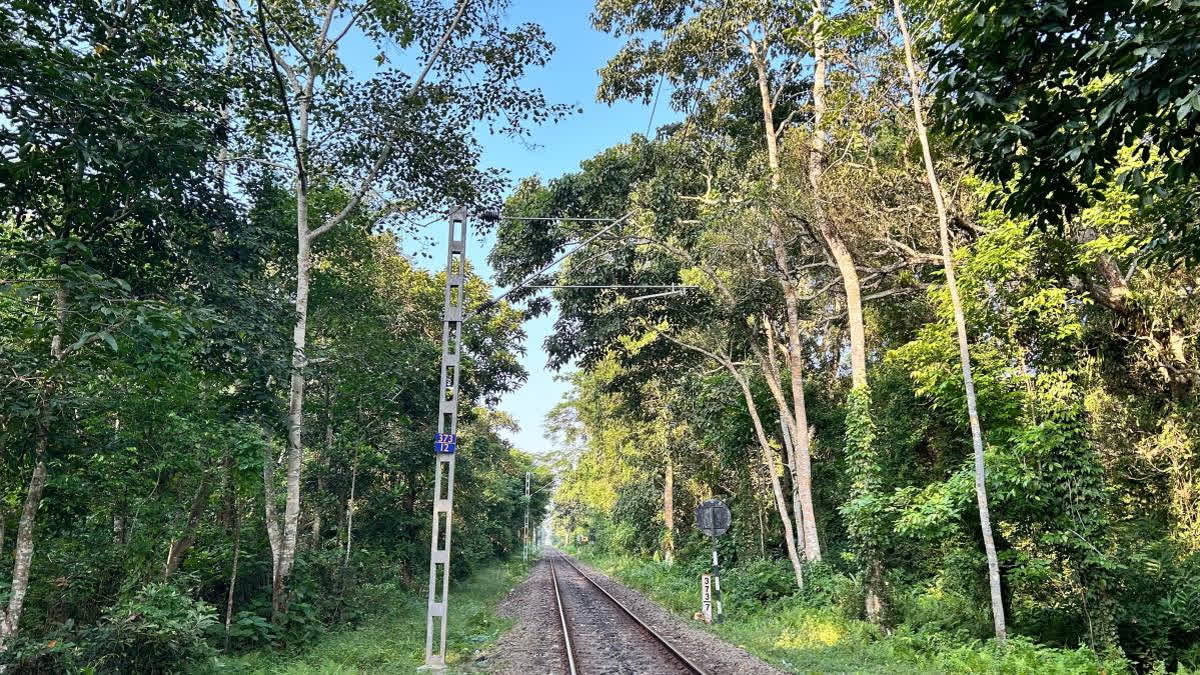Guwahati (Assam): The electrification of railway lines that crosses through the Hollongapar Gibbon Wildlife Sanctuary has threatened the survival of over 100 Hoolock Gibbons in the wildlife sanctuary.
Located in the Jorhat district of Assam, the Hoollongapar Gibbon Sanctuary contains India’s only gibbons – the hoolock gibbons, and Northeastern India's only nocturnal primate – the Bengal slow loris.
Senior primatologist of Assam-based wildlife NGO Dilip Chetri said the construction works for the electrification of the railway tracks that bifurcates the Gibbon wildlife sanctuary had already been completed and that the electrification of the tracks has threatened the survival of Hoolock Gibbons in the sanctuary.
While the western Hoolock Gibbons are listed as endangered in the International Union for Conservation of Nature (IUCN) Red List, the eastern Hoolock Gibbons are listed as Vulnerable, and populations of both species have been declining due to habitat destruction in various forms and hunting.
"As per a recent census, there are about 125 Hoolock Gibbons in Hollongapar Gibbon Wildlife Sanctuary. As Gibbons are arboreal animals they spend most of their lives in trees, eating, sleeping, playing, and reproducing in the tree canopy, the operationalisation of the electric engines through the tracks has negative impacts on their lives," said Chetri, who has been working in the sanctuary for last several years.
He said the Railways have done the electrification of the tracks project without taking any strategies to mitigate the survival threat for the Gibbons.
Although the Northeast Frontier Railway (NFR) planned installations of canopy bridges at several identified locations along the stretch and sanctioned huge amounts of money for installations of such canopy bridges, the experts expressed apprehension about the utility of such canopy bridges.
NFR Chief Public Relations Officer Kapinjal Kishore Sharma said that the electrification of the railway tracks in the stretch between Mariani to Titabar had been completed and the rest of the works should be completed by December this year. "Once the construction is completed, we are going to run the electric engines," he said.
"The proposed canopy bridges will facilitate the movement of Hoolock gibbons from one side of the railway tracks to the other side, but how can it ensure the safety of the species in the face of 11,000 watts of electricity that will run through the lines," Chetri told ETV Bharat.
Since the setting up of the railway tracks through the Gibbon Wildlife Sanctuary by the then British government in 1887, the tracks became a very sensitive barrier and threats for the wildlife, particularly for the arboreal species like Hoolock Gibbon.
The setting up of the railway tracks also bifurcated the sanctuary and divided the populations of Hoolock gibbon in the two compartments, leading to isolation and loss of communication for the last 132 years.
However, due to rapid plantation drive by the locals and some wildlife NGOs succeeded in creating a natural Canopy Bridge for Gibbons in India connecting both sides of the wildlife sanctuary and the Hoolock Gibbons of the two sides could finally establish contact in 2019.



